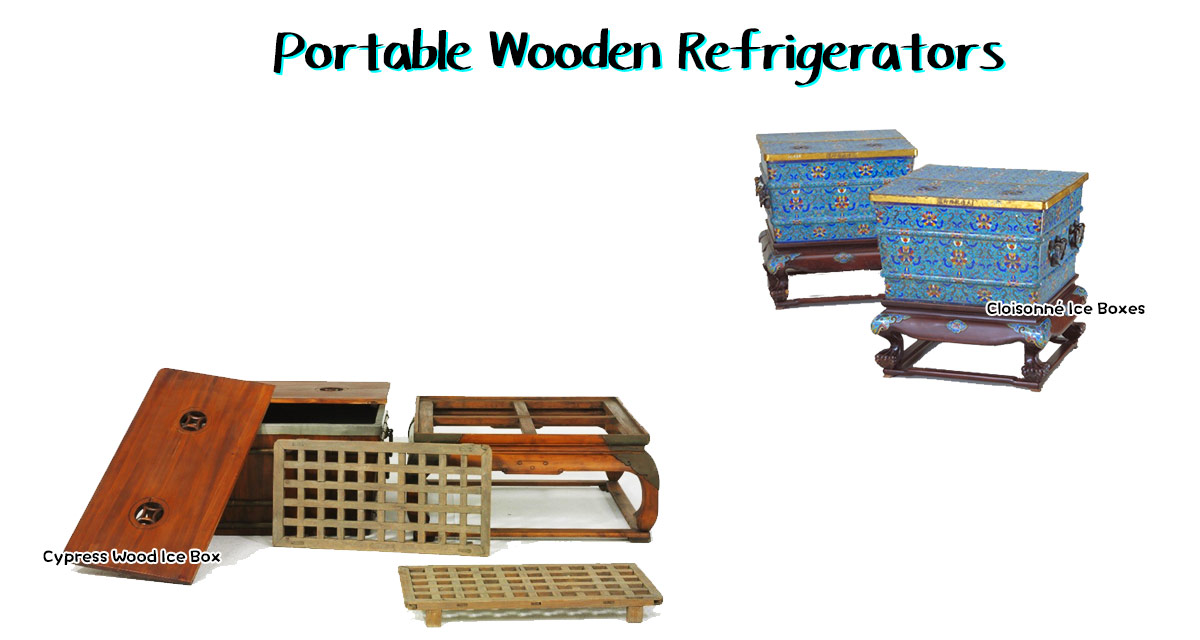In the sweltering summer, what could be more delightful than cooling off with air conditioning and ice cream? Yet, the world’s first electric refrigerator wasn’t made until 1923, and China’s first didn’t appear until 1958. So, what did people do before then? The truth is that as early as the Ming (1368–1644) and Qing (1644–1911) dynasties, emperors already had a "magic tool"—natural ice! But where did these ice chunks come from, and how were they preserved through summer? Let’s find out.
Northern China is known for its hot summers and frigid winters. As early as the Zhou dynasty (1046–256 BCE), it was customary to store ice in winter for use in summer. Hence, ice cellars became essential in the imperial palace, and this tradition continued in the Qing dynasty.
Where did the ice come from? The ice stored in these cellars was natural ice, harvested from rivers and lakes during winter. Each year, after the onset of winter, rivers would be “bathed” in a process called “river washing” in preparation for ice collection. This involved clearing weeds and debris, opening upstream gates to flush the river course, and closing downstream gates to hold the water.After about half a month following the Winter Solstice, the rivers had formed thick layers of ice, and palace labourers would begin harvesting ice from the Tongzi River, Beihai Lake, Zhongnanhai Lake, and the Imperial River in the Forbidden City. They would select the clearest and sturdiest ice and cut it into large chunks, each weighing around 80 kilograms. Did you know? Once the cut water surface refroze, more ice could be harvested—up to three or four rounds per winter! These ice chunks were transported to various ice cellars around the capital and carefully stored until summer when they would finally be used.
The Qing dynasty was renowned for its variety of chilled treats. For instance, during her summer stays at the Summer Palace, Empress Dowager Cixi would often enjoy a cooling dessert known as "sweet bowl". This dish combined thin slices of fresh lotus root tips with the pulp of honeydew melon, chilled together for a refreshing taste. Another treat involved pouring chilled grape juice over raisins and green walnuts—a cool and delightful snack.
Beyond indulging himself, the emperor would also grant ice tickets to ministers according to their rank. From entering the hottest part of the summer to the beginning of autumn, ministers could redeem these tickets for ice chunks from the imperial ice cellars.
But what about the common folk? They too enjoyed cool drinks! By the Qing dynasty, ice had become quite common among civilians. In the summer, vendors selling chilled sour plum juice were a frequent sight on the streets of Beijing. Holding a pair of small brass bowls, they would rhythmically tap them, producing a “clang, clang” sound that would instantly evoke a thirst-quenching coolness for passersby. A single bowl of this drink would banish the heat in a moment.
When the emperor travelled during the summer, large amounts of ice would be prepared in advance. But how was it transported? Aside from large ice cellars, the Qing court also used portable wooden ice boxes, known at the time as “ice buckets” or “foreign buckets”.
These wooden “refrigerators” were often crafted from rosewood, padauk, or cypress wood and resembled bucket-shaped boxes with a wide mouth and narrow base. The box had a thick wooden lid and copper rings on both sides for easy carrying. Not only were these ice boxes visually pleasing, but their design was also remarkably sophisticated, much like modern refrigerators. The inner walls were coated with lead or tin, which have low thermal conductivity. This layer provided excellent insulation to extend the life of the natural ice and prevented the melting ice from damaging the wood. To use, ice blocks were placed inside, and fruits, drinks, or other foods were arranged atop the ice for chilling.Upon close observation, you’ll notice small holes at the bottom and on the lid of these ice boxes. What purpose do they serve? The holes at the bottom allowed for the easy drainage of melted ice, keeping the interior clean, while the lid holes provided ventilation. This setup not only preserved the freshness of the food but also allowed the cool air to escape, reducing the room temperature—a feature that doubled as a primitive “air conditioning”.




